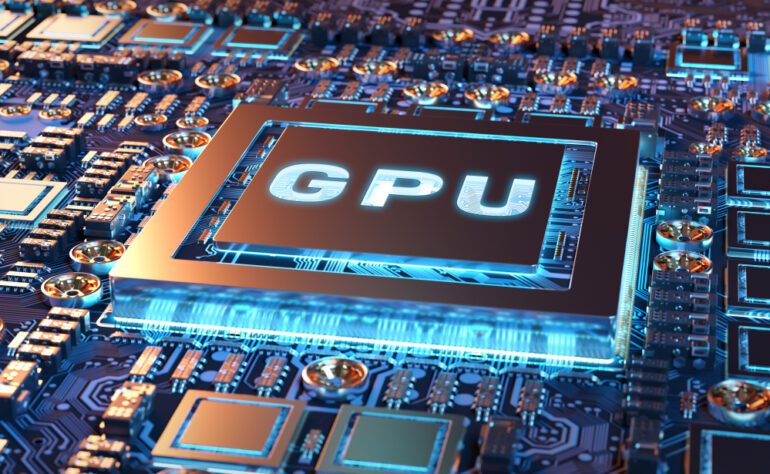- Meta unveils two new AI computing clusters, each equipped with 24,576 GPUs.
- Clusters, based on Meta’s Grand Teton platform, aim to bolster generative AI efforts.
- Variants feature different networking fabrics: RDMA over RoCE and NVIDIA’s Quantum2 InfiniBand.
- Meta’s Tectonic filesystem supports synchronized I/O for efficient GPU operation.
- Meta’s history of open-sourcing hardware continues with contributions to the Open Compute Project.
- Challenges include debugging at scale, which is addressed through collaboration with Hammerspace.
- Extensive simulations and optimization efforts enhance inter-node communication and cluster performance.
- PyTorch framework improvements maximize the utilization of cluster hardware, reducing initialization times.
- Industry-wide discussions highlight the importance of software and mathematical innovation in mitigating hardware costs.
- Other tech giants like Google and Microsoft Azure also unveil powerful AI compute solutions.
Main AI News:
Meta has recently disclosed the architecture of its latest AI computing clusters, boasting a staggering 24,576 GPUs each. These cutting-edge clusters, built upon Meta’s acclaimed Grand Teton hardware platform, signify a significant leap forward in computational prowess. Notably, one of these clusters is already in active deployment at Meta, fueling the training processes for their forthcoming Llama 3 model.
Crafted to propel Meta’s generative AI endeavors, these clusters come in two variants, distinguished by their networking fabric. The Llama 3 cluster harnesses the power of remote direct memory access (RDMA) over converged Ethernet (RoCE), while its counterpart relies on NVIDIA’s Quantum2 InfiniBand technology. Meanwhile, at the heart of the storage infrastructure lies Meta’s bespoke Tectonic filesystem, engineered to seamlessly manage synchronized I/O operations essential for processing checkpoints across thousands of GPUs.
Embracing its tradition of openness, Meta has historically shared its hardware innovations with the community. Notably, Meta’s ZionEX cluster garnered attention in 2021, followed by the unveiling of the Grand Teton platform and Meta’s open rack design in 2022. Contributing to the Open Compute Project, which it spearheaded in 2011, Meta continues to champion collaborative innovation. The establishment of the AI Alliance in late 2023, in partnership with IBM, further underscores Meta’s commitment to fostering open science and innovation in the AI domain.
Yet, Meta encountered formidable challenges in optimizing the performance of its new clusters, particularly in debugging at scale. Collaborating with Hammerspace, Meta developed interactive debugging tools tailored to their storage ecosystem, alongside a “distributed collective flight recorder” aimed at troubleshooting distributed training intricacies.
Furthermore, Meta conducted extensive simulations during the development phase to anticipate inter-node communication performance. Despite initial setbacks, characterized by erratic bandwidth utilization during benchmarking, Meta’s relentless efforts in fine-tuning job schedulers and network routing bore fruit. Subsequently, bandwidth utilization consistently surpassed the 90% mark, signaling a significant enhancement in operational efficiency.
In parallel, Meta focused on refining its PyTorch framework implementation to fully harness the capabilities of the cluster hardware. Leveraging features like 8-bit floating point operations supported by H100 GPUs, Meta optimized parallelization algorithms and initialization processes, slashing initialization times from hours to mere minutes.
Reflecting on the broader landscape of AI infrastructure, Meta’s endeavors resonate with the industry-wide pursuit of computational supremacy. Amidst discussions on platforms like Hacker News, where concerns over hardware costs loom large, voices like that of AI developer Daniel Han-Chen advocate for alternative approaches centered on mathematical and software innovations. In the quest to level the playing field with tech giants, the optimization of training processes emerges as a crucial battleground.
Beyond Meta, other major players in the AI arena are also unveiling their formidable compute capabilities. Google’s recent announcement of the AI Hypercomputer, fueled by their cutting-edge Cloud TPU v5p accelerator hardware, stands as a testament to the relentless pursuit of computational excellence. Similarly, Microsoft Azure’s Eagle supercomputer, housing a staggering 14,400 NVIDIA H100 GPUs, has made waves by clinching the third spot on the HPC Top500 rankings. As the race for AI supremacy intensifies, the convergence of hardware innovation and software optimization remains pivotal in shaping the future landscape of artificial intelligence.
Conclusion:
Meta’s unveiling of groundbreaking AI infrastructure signifies a significant leap forward in computational capabilities. With advancements in hardware, software optimization, and collaborative innovation, Meta is poised to reshape the landscape of AI computing. As the market witnesses the emergence of formidable compute solutions from tech giants like Meta, Google, and Microsoft Azure, the convergence of hardware innovation and software optimization becomes paramount in driving the future of artificial intelligence.

